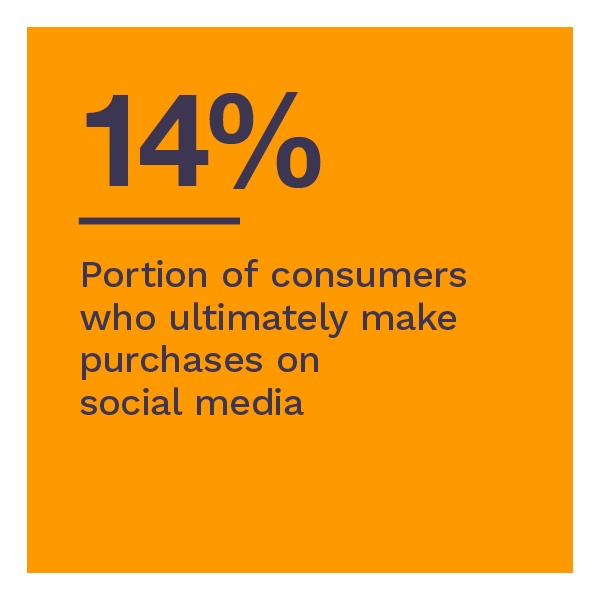Study Finds US Consumers Look a Lot But Buy Little on Social Media
![]() Tapping or clicking the hashtag #TikTokMadeMeBuyIt will bring users to pages upon pages of videos in which TikTokers show off viral purchases they first discovered on the platform: iced coffee slushy cups, hair gem stampers, live pet axolotls, levitating bulb lamps and beyond. The hashtag has generated 58.5 billion views on social media as of June 2023.
Tapping or clicking the hashtag #TikTokMadeMeBuyIt will bring users to pages upon pages of videos in which TikTokers show off viral purchases they first discovered on the platform: iced coffee slushy cups, hair gem stampers, live pet axolotls, levitating bulb lamps and beyond. The hashtag has generated 58.5 billion views on social media as of June 2023.
![]() Platforms such as TikTok, Facebook and Instagram have made it quicker and easier for consumers worldwide to share their shopping stories and start retail trends with friends, family and strangers. It is little wonder that retailers and influencers are eager to harness this power for themselves. However, PYMNTS finds that just 43% of consumers, or 110 million individuals, browse social media to find goods and services. Also, just 14%, or 36 million individuals, ultimately purchase those goods and services.
Platforms such as TikTok, Facebook and Instagram have made it quicker and easier for consumers worldwide to share their shopping stories and start retail trends with friends, family and strangers. It is little wonder that retailers and influencers are eager to harness this power for themselves. However, PYMNTS finds that just 43% of consumers, or 110 million individuals, browse social media to find goods and services. Also, just 14%, or 36 million individuals, ultimately purchase those goods and services.
These are just some of the findings detailed in “Tracking the Digital Payments Takeover: Monetizing Social Media Edition,” a PYMNTS and Amazon Web Services collaboration. The report details why retailers leverage social media to drive sales and remove barriers standing in their way. We surveyed a census-balanced panel of 2,976 United States consumers between May 5 and May 15 to learn which factors encourage them to shop on social media, how they pay for their transactions and what merchants must do to boost conversion.
What people buy is directly related to the strengths of their social channels: clothing on Instagram, beauty products on TikTok and food and beverages on YouTube. 
We found that specific social media platforms performed better in some product categories than others. Instagram’s platform allows users to post and browse pictures in curated feeds and is well suited to display highly visual products such as clothing. Consumers were most likely to buy clothes on Instagram, with 47% doing so in the 30 days prior to the survey. TikTok comes in a close second, with 42% of users doing so.
Social media shopping is about impulse purchases. Merchants must give shoppers quick, easy ways to go from browsing to paying to win them over.
One of the appeals of social media shopping is the ease and convenience with which consumers can switch from browsing to buying. Users can make purchases as soon as they discover attractive products and new merchants. Among consumers who transact on social media, 32% say they do so because it is easy and familiar, and 28% say it allows them to buy with less effort and as soon as the product catches their attention. This reasoning underscores how crucial it is for social media platforms to have the right tools to facilitate users switching from browsing to buying mode.![]()
However, most users question the authenticity of the merchants they discover on social media and the products they sell. Building user trust will be vital to driving more sales.
Despite the promise of ease and convenience, social media sellers must overcome impediments to boost conversion. At the forefront is a lack of trust: 37% of consumers who do not transact on social media say that they do not trust that they can safely share their personal data, and 31% are skeptical that sellers on social media platforms are legitimate businesses. These are the top factors that discourage consumers from transacting on social media. Still, our research found other areas where consumers are skeptical of the merchants and products they find on social media.
Social media represents a powerful new way for retailers and merchants to reach new customers and boost their sales — but only if they provide the seamless transaction experiences those customers expect. Download the report to learn more about what factors most influence whether consumers shop on social media sites.

